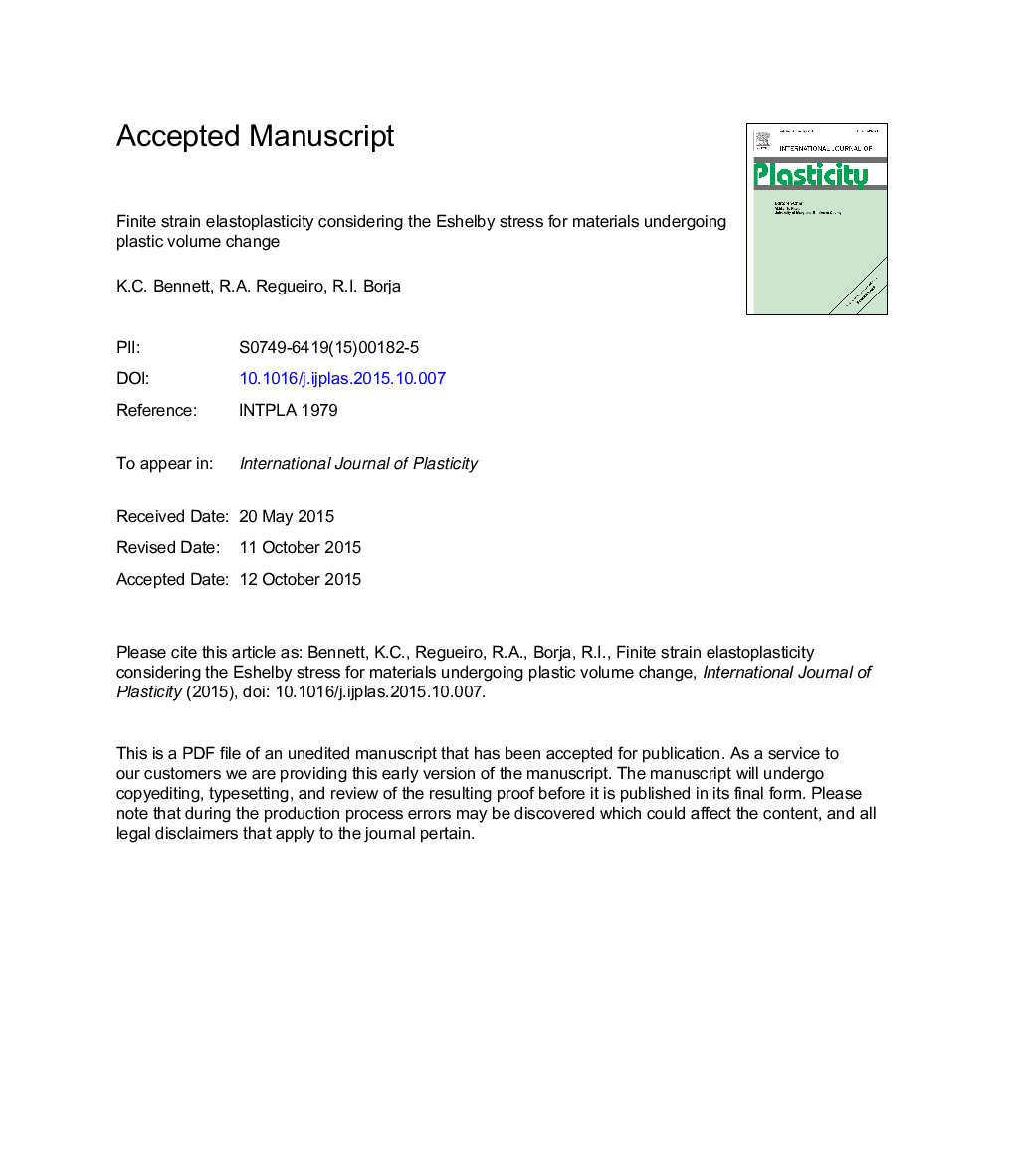| Article ID | Journal | Published Year | Pages | File Type |
|---|---|---|---|---|
| 7174945 | International Journal of Plasticity | 2016 | 55 Pages |
Abstract
In consideration of materials capable of undergoing significant plastic changes in volume, an alternative finite strain hyper-elastoplastic constitutive framework is proposed in terms of the Eshelby stress. Taking a phenomenological point of view, a thermodynamically-consistent approach to developing the constitutive equations is presented and discussed. Various Eshelby-like stresses are defined and shown to be energy-conjugate to the plastic velocity gradient, and a general framework is formulated in the stress-free/plastically-deformed intermediate configuration associated with the multiplicative split of the deformation gradient, as well as the current configuration. A novel Eshelby-like stress measure is proposed, which is scaled by the elastic Jacobian, and is shown to be energy-conjugate to the plastic velocity gradient in the spatial representation. Modified Cam-Clay and Drucker-Prager cap plasticity constitutive equations are introduced, and large strain isotropic compression simulations are performed and compared with experimental measurements. The model results are compared with standard approaches formulated in terms of the Mandel and Kirchhoff stresses, which are shown to require the assumption of isochoric plasticity to satisfy the Clausius Planck inequality (Mandel) and preserve that the intermediate configuration remains stress-free (Kirchhoff). The simulations show that both the material and spatial Eshelby-like stress measures presented here produce the same mean Cauchy stress results; whereas, standard formulations, which make use of isochoric plasticity assumptions, diverge from each other at significant plastic volume strains. Standard formulations are further shown to violate the second law of thermodynamics under certain loading conditions. Calibration of model parameters to high pressure isotropic compression of Boulder clay is used to compare the various models.
Keywords
Related Topics
Physical Sciences and Engineering
Engineering
Mechanical Engineering
Authors
K.C. Bennett, R.A. Regueiro, R.I. Borja,
